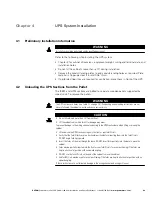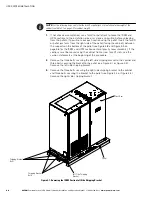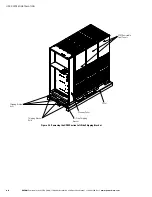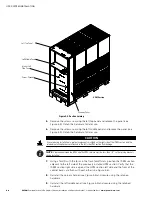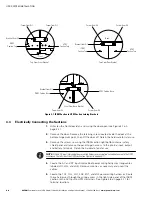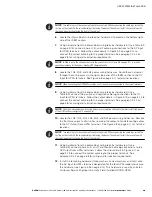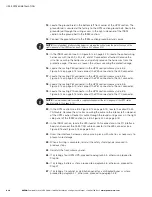
UPS INSTALLATION PLAN AND UNPACKING
EATON
Powerware
®
9395 UPS (1000–1100 kVA) Installation and Operation Manual
S
164201764 Rev 1
www.powerware.com
3−19
3.2.3
UPS System Interface Wiring Preparation
Control wiring for features and options should be connected at the customer interface
terminal blocks located inside the UPS.
W
A
R
N
I
N
G
Do not directly connect relay contacts to the mains related circuits. Reinforced insulation to the mains is
required.
Read and understand the following notes while planning and performing the
installation:
S
Use Class 1 wiring methods (as defined by the NEC) for interface wiring up to 30V.
The wire should be rated at 24V, 1A minimum.
S
Use Class 2 wiring methods (as defined by the NEC) for interface wiring from 30V
to 600V. The wire should be rated at 600V, 1A minimum and 12 AWG maximum.
S
Use twisted-pair wires for each input and return or common.
S
All interface wiring and conduit is to be provided by the customer.
S
When installing external interface wiring (for example, building alarm, relay output,
battery breaker trip, and X−Slot) to the UPS interface terminals, conduit must be
installed between each device and the UPS cabinet.
S
Install the interface wiring in separate conduit from the power wiring.
S
When installing internal interface wiring to X−Slot terminals, route the wiring
through the internal opening in the X−Slot communication bay.
S
All building alarm inputs or remote features require an isolated normally-open
contact or switch (rated at 24 Vdc, 20 mA minimum) connected between the alarm
input and common terminal. All control wiring and relay and switch contacts are
customer-supplied.
S
The building alarms can be programmed to display the alarm functional name.
S
LAN and telephone drops for use with X−Slot connectivity cards must be provided
by the customer.
S
The UPS battery aux signal wiring from the UPS must be connected to the battery
disconnect device.
S
A supplemental 48 Vdc shunt trip signal for the battery disconnect device is
provided, but is not required for normal operation.
S
Battery aux and 48 Vdc shunt trip wiring should be a minimum of 18 AWG.
S
The REPO feature opens all contactors in the UPS cabinet and isolates power from
your critical load. Local electrical codes may also require tripping upstream
protective devices to the UPS.
S
The REPO switch must be a latching−type switch not tied to any other circuits.
S
A jumper wire must be connected between pins 1 and 2 on TB1, if the
normally-closed REPO contact is not used.
S
REPO wiring should be a minimum of 22 AWG and a maximum of 14 AWG.
Summary of Contents for 9395 UPS 10001100 kVA
Page 173: ......
Page 174: ...1642017641 164201764 1...





















